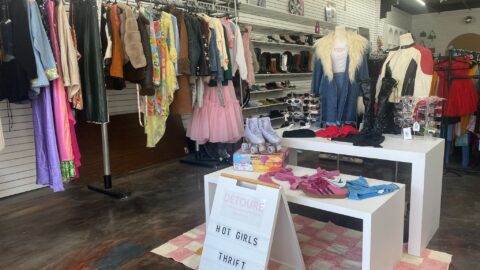Nothing makes a retailer’s day better than a customer’s cart chock full of items. It’s perfect. It’s profitable. It’s…not happening. What’s the deal? For some inexplicable reason, the cart is left alone and the “Buy Now” button is never pushed. The conversion consummation has been put on hold by yet another shopper who can’t commit. Sure, you can send out a reminder email, but does that really bring a customer back?
The results of Listrak’s fifth annual Shopping Cart Abandonment (SCA) Research Study reveal best practice recovery tactics used by Listrak’s clients as well as the Internet Retailer Top 1000. See for yourself why retailers not using an SCA campaign are leaving millions of dollars on the table.
The right SCA campaign and cadence can generate a 19.7% conversion rate;
Advertisement
20% of campaigns use discounts, but wait for the fourth or fifth follow-up to do so;
94.1% of retailers that use personalization in the first email do so through the second and third emails; and
The call to action (CTA) is key in all emails; 78% use “Checkout Now” buttons.
Timing Is Everything
So, your potential customer left a packed cart in your aisle, presumably never to return. But they’re not getting away that easy, are they? The report found that the timing of the first SCA messages ranges widely, from just one minute post abandonment to eight hours, with the average being 2 hours and 46 minutes. The most frequently used timing for top-performing campaigns is three hours.
When sending the second SCA message, the most popular cadence is two days after the first. In fact, none of the top performing retailers waits as long as three or four days before sending a second message.
The most popular wait period between the second and third message is five days. More than 30% of the top performing retailers send a fourth SCA message, and while the most popular cadence is four days after the third, the range of timing for this message is the least consistent of all. But you can do so much more with those later messages…
Discounts (Delayed)!
Three messages in and no bites? Time to bring in the big guns. Or, in this case, a discount. The report reveals offering a discount, free shipping or other incentive in order to get a cart abandoner to complete an order is a successful strategy. However, such offers do compromise the profitability of the sale.
Sometimes, all an abandoner needs is a reminder that something was left in a cart. The research shows that retailers from both surveyed groups, for the most part, have come to realize this, and so have begun to wait until later in the SCA email series to introduce an offer.
The most popular incentives offer 5% to 10% off, but these are only made by 18% of retailers studied, and they are typically offered in the last email in the series. One in five retailers studied offer no incentive at all.
Personalization Goes A Long Way
Every customer is special and you want them to feel that way. Years ago, personalization in email simply meant using a subscriber’s name in the subject line and/or body of the email, and it’s a practice that is still in use.
In 2015, 94.1% of retailers who personalize by name in the first email continue to do so throughout the second and third emails. This provides the consumer with something a little better than an impersonal tracking number, but also more than likely gives them a feeling that a robot now knows their name. To combat this perception: enter product recommendations.
Listrak found that among the top half of the Top 1000 retailers, 24% used product recommendations to personalize their SCA emails. This tactic gives customers the feeling that you (or your robot) have done at least a minimum of research into their likes and habits.
Putting It All Together, Clearly
While there are no guarantees, the right SCA campaign is sure to bring back some bucks you thought were gone for good. Here are some final tips:
• Retailers shouldn’t patronize abandoners; potential customers know they “forgot something,” so give them a reason to come back and buy;
• Research why customers abandon carts, and address those reasons with message content;
• Be clear and creative with calls to action; and
• Remember that it never hurts to follow up; in fact, it can be quite profitable.
Download Listrak’s 2015 Cart Abandonment Research Study
Here’s another perspective on cart abandonment.









